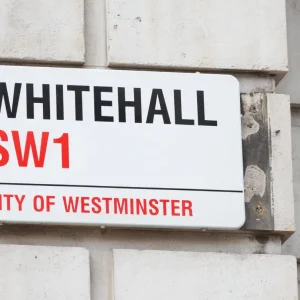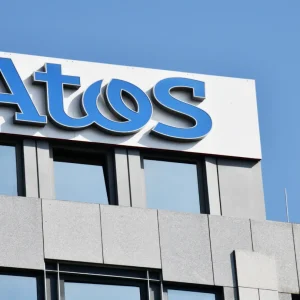

This year has been an incredibly important one for the UK public sector, with the ongoing impact of Brexit, Covid-19 and now the looming threat of the new Omicron variant. Added to this is the first multi-year spending review since 2015, which offered a more generous real-term rise in departmental budgets than many dire predictions expected. And although these increases will not compensate for cuts made over the course of the past decade, the investments suggest that for central government, local government and the NHS, digital transformation is high on the agenda for 2022.
UK central government IT in 2022
What surprised us about the 2021 Spending Review is the scale of the additional spending outlined, with the Chancellor promising an extra £150bn a year for public services by 2024-25 while staying within his own fiscal rules about the ratio of debt to GDP. Despite this, specific announcements within central government departments linked to ‘digital transformation’ remained thin on the ground.
Two of the big winners were the Department for Work and Pensions and Her Majesty’s Revenue and Customs, both allocated significant funds (around £2.6bn and £1.7bn respectively) for specific programmes focusing on improving the customer experience, securing legacy systems, and reducing fraud and error. What is disappointing to see is the lack of funding for cross-departmental tech initiatives, other than the Single Sign On project which, though not documented in the Budget Red Book, is reputedly receiving £400m over three years – two-thirds more than the failed Verify service.
All this means digital transformation will be front and centre again in 2022, following the turbulence of Brexit and the Covid-19 pandemic. Cybersecurity is also moving back up the agenda, both in terms of managing technical debt and securing a hybrid-working landscape. Detailed plans to combat cybercrime should be forthcoming in a new national cybersecurity strategy scheduled for early 2022.
Worryingly, though, there remains no real emphasis on any central coordination of tech-enabled policy. This is despite the creation of a new Central Digital and Data Office within the Cabinet Office, with the lofty goal of becoming a “global leader in digital government”. However, the Cabinet Office arguably came out worst from the Spending Review with what looks like a diminishing budget in real terms. This implies that, for better or worse, individual departments will continue to plough their own furrows.
UK public sector tech in 2022: local government
Outside of Whitehall, councils in England will be buoyed by the extra £4.8bn in core funding over the next three years. Funding for the devolved governments also increased, up £4.6bn for Scotland, £2.5bn for Wales and £1.6bn for Northern Ireland, raising the prospect of extra money for them and local authorities outside England as well. Despite this, funding within England is still £3.2bn short of what is needed to maintain services at current levels. This means there will be no great post-austerity revival in ICT spending, which we expect will remain flat. However, priority areas such as social care will likely receive most of the extra cash.
The Spending Review also gave more details of the £1.7bn that has been allocated to 105 everyday infrastructure projects as part of the Levelling Up Fund. This covers projects such as the regeneration of town centres, and improving physical and digital connectivity, all of which are likely to involve some ICT spending. Outside of this, however, councils still lack real detail over whether levelling-up will lead to any further devolution of significant funding and powers. Some indication of what might be included in next year’s Levelling Up white paper has emerged in recent days: communities secretary Michael Gove reportedly wants “every part of England to have a local leader with equivalent powers to London by the end of the decade”.
Local government’s technology priorities for 2022 are mostly those that predate, or have been accelerated by, the pandemic. This includes opting for commercial off-the-shelf solutions where available, and spinning-up new services in-house when not. Councils will also continue to rationalise the array of legacy systems and hardware in use across the sector, though they are more likely to adopt a multi-supplier model and break up large IT outsourcing deals when no longer offering value for money. Other 2022 priorities include continuing to shift citizen interactions online, adopting cloud by default (though not for everything), increasing hybrid working for staff, automation, and cybersecurity.
The latter is especially important considering recent high-profile attacks, including a cyberattack that cost Hackney Council £10m. Keep an eye on the £86m in funding allocated for tackling cyber resilience across the sector over the next three years.
UK public sector IT in 2022: health and social care
The Spending Review promised an extra £2.1bn for the Department for Health and Social Care (DHSC) for “innovative use of digital technology”. On top of this are wider increases which could have a direct or indirect impact on tech spending, including £9.6bn of additional cash for tackling Covid-19-related measures, £8bn to tackle the backlog in elective care, £2.3bn to boost the NHS’s diagnostic capabilities and £1.7bn to increase social care quality and integration.
This latter investment is especially important as, arguably, the greatest issue facing the NHS isn’t necessarily how technology can help, but how care can be reformed, politically and culturally, to be more efficient and joined-up. This is vital if the crisis in social care is to be met, limiting pressures on the rest of the NHS. Next year is especially important given plans for the legal establishment of Integrated Care Systems (ICSs) in every area of England in April. These will act as the focal point through which care is coordinated with local stakeholders (such as councils) and will take on responsibility for commissioning, improving population health and reducing inequalities more widely.
Next year is also likely to see the planned merger of NHSX – a joint unit of NHS England and the DHSC – and NHS Digital with NHS England. This is expected to improve co-operation by uniting the key digital bodies of the NHS into a single Transformation Directorate which will lead the digital agenda for the NHS at the national and ICS level. NHSX will evolve into its strategy function and Simon Bolton, the interim CEO of NHS Digital will become chief information officer. Though still being considered in Parliament as part of the upcoming Health and Social Care Bill, if it does happen, this move will turn NHS England into even more of a procurement behemoth, uniting NHS Digital’s more than 2,700 FTE staff and £19m in annual ICT spending with NHS England’s 7,000 FTEs and £66m annual spending.
So, there are reasons for optimism for technology leaders in the UK public sector. However, a word of caution: expect evolution, not revolution, when it comes to spending priorities as the extra cash announced last month will still not be enough to properly address the cuts of the past decade, especially in local government and social care. Yet, ending on a positive note, there certainly is money available that many believed would be difficult to come by, and digital transformation will be a clear priority where budgets allow.
This article was first published on Tech Monitor.






